Termite Droppings but No Termites: Homeowner’s Curiosity and Concerns!
Imagine discovering small, pellet-like droppings around your home, similar to what termites leave behind. Your heart races as you fear the worst: a termite infestation silently damaging your beloved abode. But despite your thorough search, not a single termite appears. Now you’re left wondering, why are termite droppings but no termites?
We are going to explain termite droppings in this article. If you also want to read about this topic, congrats, you’re in the right place. We’ll discuss the complete details. Get ready to delve into the mysterious world of hidden mischief within our homes.
What do Termite Droppings Look Like?
Termite droppings, known as frass or termite faeces, possess a unique visual aspect. They look like small, elongated pellets or grains, like tiny pieces of sawdust or coffee grounds. Termite droppings can come in different colors, usually dark brown or black. Sometimes, they might seem like dirt or debris, but if you look closer, you’ll notice their unique shape. Knowing how termite droppings look can help homeowners spot signs of termite activity and take action to protect their homes from further damage.
Where do You Find Termite Droppings?
Near-Infested Wood:
Termites typically feed on wood, so that you may find their droppings near wooden structures, such as walls, floors, or furniture.
Along Termite Tunnels:
Termites build tunnels or pathways to move around and reach their food sources. Droppings can accumulate along these tunnels or at their entry points.
Around Termite Nests:
Subterranean termites build nests in soil or mud tubes, and their droppings can be found near these nests or in the soil surrounding them.
On Windowsills or Surfaces:
Termites may shed their wings near windows, and droppings can be found in the vicinity, especially if they are swarming or attempting to establish new colonies.
Termite Droppings from the Ceiling:
Termites might be present in the ceiling, especially if there is wooden construction or exposed timber. They could also be coming from an infested area above the ceiling, such as an attic or upper floors.
Termite Droppings on the Floor:
The presence of termite droppings on the floor may indicate that termites are active in the area above the floor. They could be infesting the walls, wooden structures, or even the ceiling.
In Attic or Crawl Spaces:
Termites can infest hidden areas like attics or crawl spaces, leaving droppings behind as evidence of their presence. Termite droppings are frequently discovered in proximity to other indications of termite presence, such as mud tubes, compromised wood, or discarded wings.
Termite Droppings as Early Warning Signs but No Termites
When you see termite droppings but no termites, it’s a sign that they might be nearby. These droppings look like tiny pellets, like sawdust or coffee grounds. Even if you can’t see the termites themselves, finding their droppings in places like the floor, windowsills, or near wooden areas is a clue that they could be around. By catching them early, you can prevent damage to your home and take the necessary steps to keep it safe.
How to Identify Termite Droppings?
You can tell what kind of droppings they are by following a few easy steps. First, take a close look at the droppings themselves. Termite droppings are small pellets or grains that resemble wood fragments or sawdust.
They are typically dark brown or black. Next, consider the location where you found the droppings. Termites often leave droppings near wooden structures, windowsills, or on the floor. Pay attention to the consistency of the droppings—they should be dry and not sticky, unlike dirt or mud.
What to Do if I Find Termite Droppings?
If you find termite droppings, taking swift action is essential to address the potential termite infestation. As captioned below.
Stay Calm:
Don’t panic! Seeing termite droppings doesn’t mean termites overrun your home. Stay focused and takes action to handle the situation.
Get Professional Help:
Contact a pest control expert to confirm if the droppings are indeed from termites and assess the problem. They will know how to identify termite droppings accurately and suggest the best action plan.
Schedule an Inspection:
Arrange for a thorough home inspection by the pest control professional. They will check for termite activity and any damage caused. The right medicine will be suggested based on what they find out.
Follow Recommendations:
If termites are confirmed, follow the advice of the pest control expert. Depending on how bad the problem is, they might suggest using chemicals or traps to get rid of the pests.
Take Preventive Measures:
Along with treatment, prevent future termite problems. This could involve sealing cracks, reducing moisture, ensuring good ventilation, and keeping wood and debris away from your home.
Remember, dealing with termites requires professional help. By acting promptly and following the advice of experts, you can protect your home and prevent further termite damage.
How to Tell if Termite Droppings Are Old or New?
There are a few things to look at to figure out if termite droppings are old or new. Fresh droppings are usually darker in colour and slightly damp or sticky. They may form small piles or clusters and have a more defined shape.
As droppings age, they become lighter, dry out, and crumble easily. If you find fresh termite droppings in an area with recent signs of termite activity, likely, the droppings are also new. However, it’s always best to consult a pest control expert for an accurate assessment and treatment.
Types of Termite Droppings (Frass) or Pellets
Termite droppings, which are also called frass or pellets, are different based on the type of termite. Here are the main types:
Dry-wood Termite Droppings:
These termites produce small, elongated pellets with ridges or concave surfaces. They are usually tiny and can be light tan to dark brown.
Subterranean Termite Droppings:
Subterranean termites create mud tubes or tunnels for protection. Their droppings, mud tubes or carton material appear as muddy, wet substances.
Damp-wood Termite Droppings:
Damp-wood termites prefer moist or decaying wood, and their droppings are malleable, similar to wet soil or sawdust. Termite droppings have multiple shades from light to dark brown.
Even though figuring out what termite droppings look like is helpful, it’s best to talk to a professional pest control expert to get an accurate assessment and the best treatment options based on the type of termites and how bad the outbreak is.
Termite Dropping Frass: A Common Sign of Termite Activity
Frass, which termites leave behind when they die, is a familiar sign that termites are around. Termites leave behind these droppings as they feed on wood and build their nests. Here’s what you need to know about termite droppings:
Appearance:
The specific type of termite influences the size and color of termite droppings. They often resemble tiny wood pellets or sawdust. The colour can range from light brown to dark brown or black.
Texture:
Termite droppings typically have a granular or grainy texture. They may feel dry and can crumble easily when touched.
Location:
You may find termite droppings near infested areas, such as on the floor, windowsills, or basements. They can also be found in tunnels, mud tubes, or near termite galleries within the wood.
Quantity:
A significant amount of termite droppings indicates a higher level of termite activity. Large accumulations of droppings may be a sign of an extensive infestation.
Differentiating from Other Substances:
It’s important to distinguish termite droppings from other substances like sawdust, wood shavings, or other insect droppings. Termite droppings are often more uniform in shape and colour.
If you discover termite droppings in or around your home, you must seek professional assistance from a pest control expert. Upon assessing the situation, professionals can verify the presence of termites and provide recommendations on the most effective methods to eliminate them and safeguard your property against further damage.
How to Get Rid of Termite Droppings?
Getting rid of termite droppings involves cleaning and addressing the underlying termite infestation. Here’s what you can do:
Clean-Up:
Begin by carefully cleaning up the termite droppings using a vacuum cleaner or a damp cloth. Make sure to wear protective gloves to avoid direct contact with the droppings. Dispose of the collected droppings in a sealed bag or container to prevent any potential re-infestation.
Identify the Source:
Find out where the termite droppings came from. Inspect your house for indications of termite presence, such as mud tubes, damaged wood, or active termites. Finding the cause will help you figure out how bad the problem is and what needs to be done to fix it.
Consult a Pest Control Professional:
Take the expertise of a licensed pest control professional. They will do a full inspection of your property to determine how bad the termite problem is and devise a plan to treat
Termite Treatment:
The pest control expert will use different treatments depending on how bad the outbreak is and what kind of termites are there. This can include chemical treatments, termite baits, or localized spot treatments.
Repair and Prevention:
After the termite treatment, repair any damaged wood or structures caused by the infestation. Additionally, implement preventive measures such as removing wood debris from the vicinity of your home, maintaining proper ventilation, and addressing moisture issues that may attract termites.
It is crucial to remember that termite eradication is a challenging task that professionals best handle. They have the knowledge, experience, and access to successful treatments to ensure that all termites are gone and that your home is safe for the long term.
Do Termites Leave Sawdust Behind?
No, termites don’t leave sawdust behind. The misconception of termites leaving sawdust can be attributed to their feeding habits and the resulting damage they cause. Unlike wood-boring insects, such as carpenter ants or beetles, termites consume wood from the inside out.
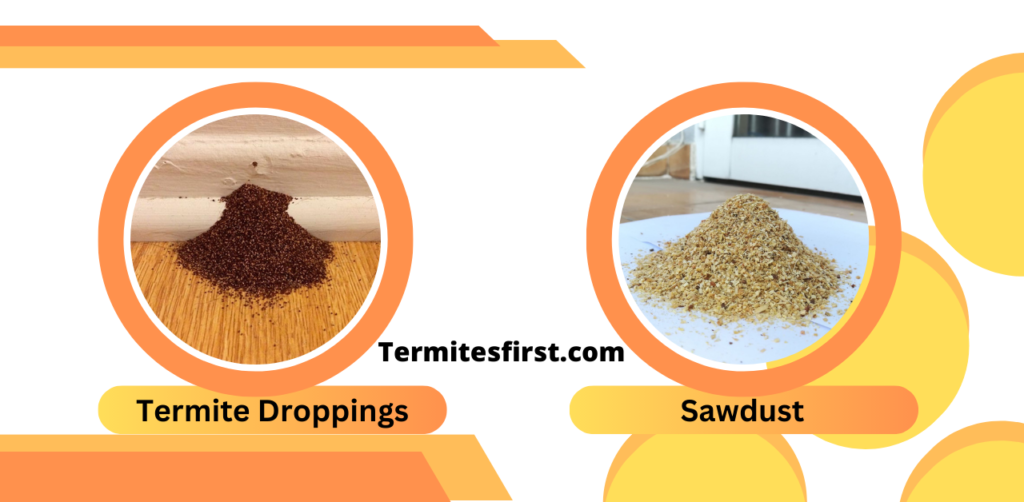
How To Differentiate Termite Droppings From Saw Dust?
| Termite Droppings | Sawdust | |
| Appearance | Small, elongated pellets | Tiny wood particles |
| Color | Light brown to dark brown/black | Natural wood color |
| Texture | Granular, compact | Light, loose |
| Source | Near termite activity areas | Wood damage or woodworking |
| Presence of Insects | Often accompanied by live termites | May or may not have live insects |
| Moisture Content | Dry | May retain some moisture |
Are Termite Droppings Dangerous or Toxic?
The droppings, or frass of termites, are not harmful to humans. They are composed of digested wood fibres and termite waste.
Carpenter Ant Droppings vs Termite Droppings
| Carpenter Ant Droppings | Termite Droppings | |
| Appearance | Usually small and granular | Small pellets or granules |
| Color | Varied, often dark | Light brown to dark brown/black |
| Shape | Irregular, like coffee grounds | Elongated or hexagonal pellets |
| Texture | Grainy and rough | Granular or compact |
| Source | Near carpenter ant activity areas | Near termite activity areas |
| Presence of Insects | Can indicate active carpenter ant infestation | Can indicate active termite infestation |
| Wood Particles | May contain wood fragments | Primarily composed of digested wood fibers |
| Health Risk | Generally not harmful to humans | Generally not harmful to humans |

What Color Is Termite Poop? | Termite Droppings Color
Termite droppings or frass are light brown to dark brown or black. The specific color can differ depending on the type of termites and wood they consume. However, the colour alone cannot tell which type of termite has caused the most damage.
What Colour is Fresh Termite Droppings? Black Termite Droppings
Termite droppings are usually light colors, like beige or pale brown, when they are fresh. They can get darker brown or black as they get older. The exact color can change based on the type of termites and the wood they eat. If you see fresh termite droppings, it’s important to take action quickly to prevent more damage. Get professional help to identify and treat the termite infestation.
Conclusion: Termite Droppings but No Termites
Finding termite droppings but no actual termites can be confusing for homeowners. Although you might not see the termites themselves, the droppings are clear signs of their presence and causing potential damage. These tiny pellets or granules indicate that hidden termites are at work, often near damaged wood or affected areas. When you find termite droppings, getting help from a trained pest control expert is essential. They can look at the situation, figure out how bad the problem is, and take steps to protect your house. Don’t ignore termite droppings, as they are early warnings that require prompt action to prevent further damage to your property.
Related:- Termites in Ohio
FAQ’s:
Termite droppings, also known as frass, are not harmful to humans but can indicate a potential termite infestation. Termites can do a lot of damage to wooden buildings because they eat things made of cellulose.
Termite droppings are not harmful to humans, but they can serve as an indication of a termite infestation in your home. Termites eat wood, and their droppings are made up of digested wood particles. If you see these droppings, dealing with the termites is essential.
Termite droppings are not typically described as shiny. They often look like small, long pellets or granules, like coffee grounds or sawdust. The droppings can be any color from dark brown to beige, based on the type of termite and wood it ate.
They are not usually soft to the touch. Termite droppings are made up of bits of wood that have been digested. Their consistency can change based on the type of termite and the type of wood it has eaten. However, termite droppings tend to be dry and crumbly rather than soft.
Wear gloves and protective clothing. Collect the droppings with a vacuum or broom and put them in a bag you can seal. To clean the area, you can use a wet cloth or sponge. Look for signs of live termites, such as mud tubes or damaged wood.
Get professional help to treat the termite infestation and prevent future problems. Remember, cleaning alone won’t solve the termite issue; you must address the root cause.

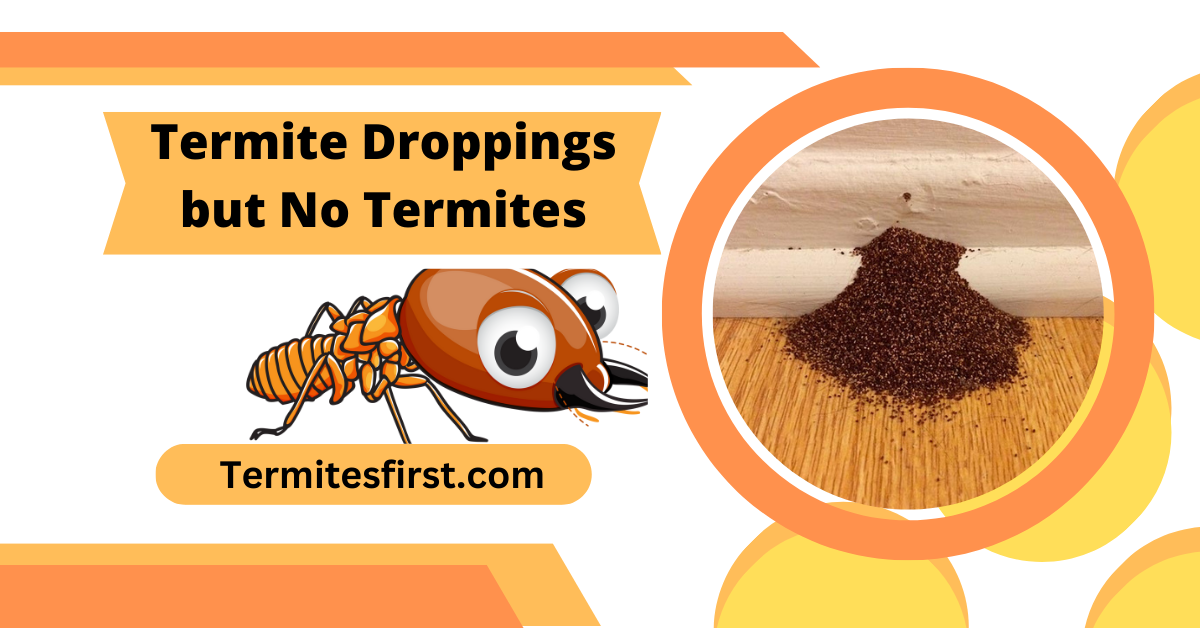
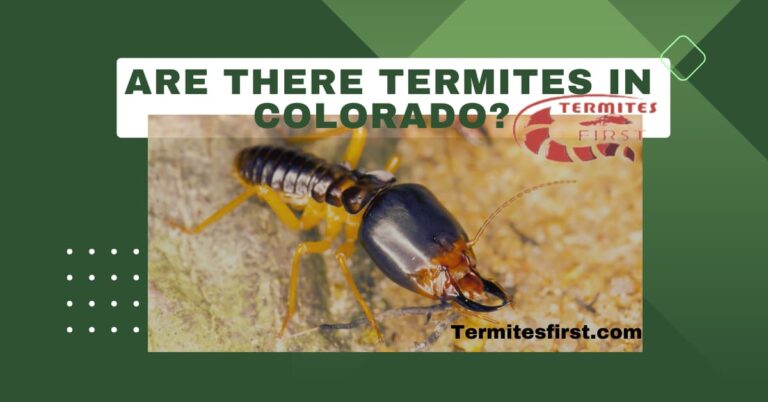
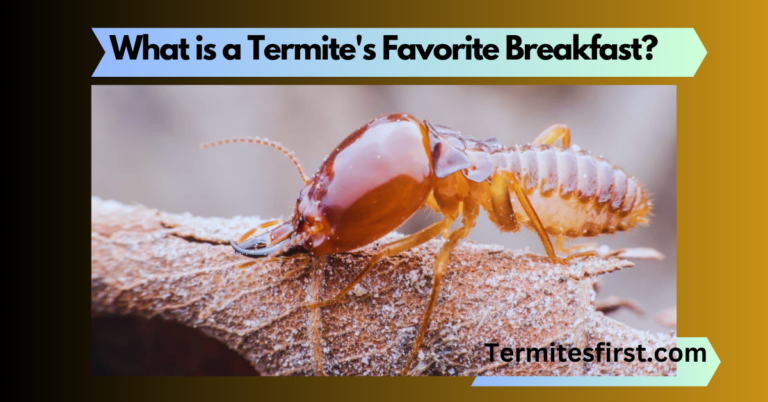
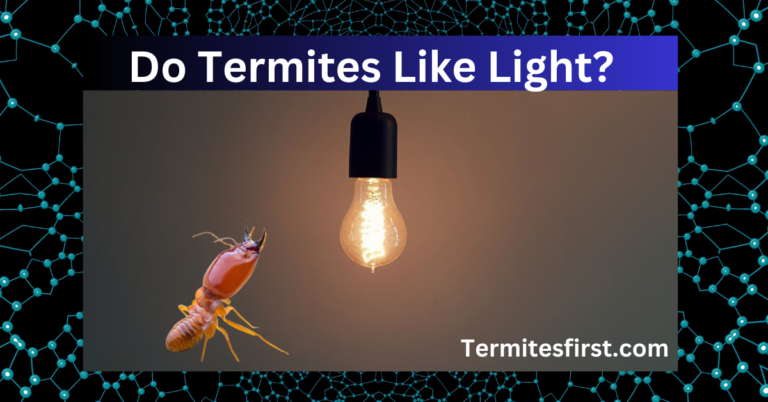
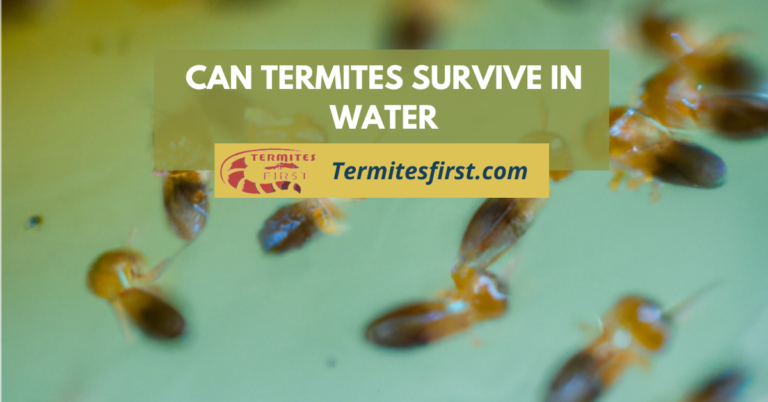
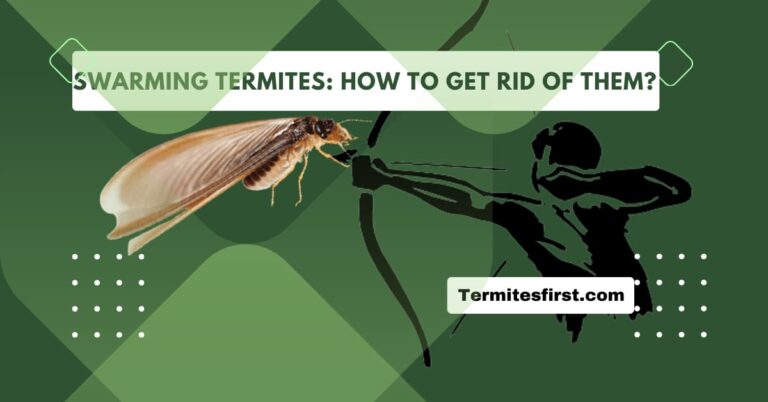
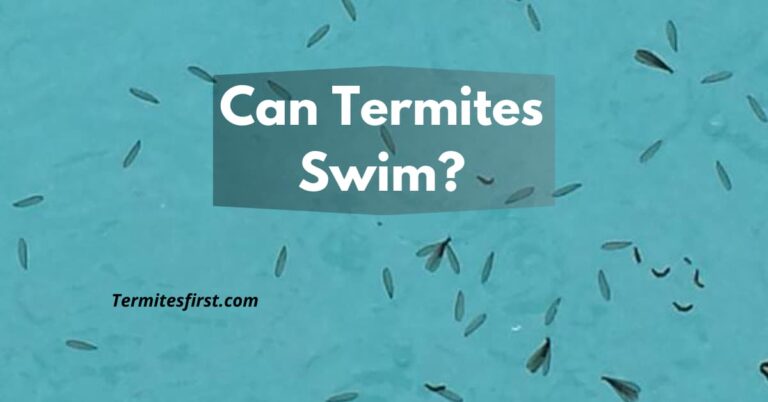
9 Comments